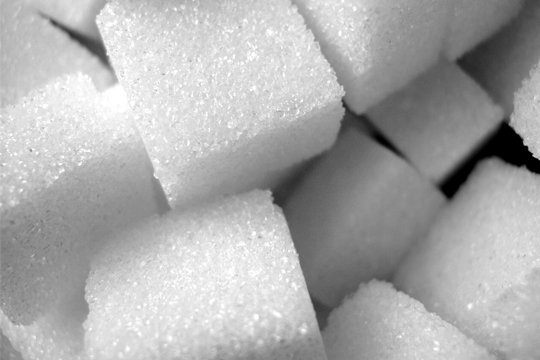
Reducing Food Waste in Foodservice
October 16, 2018 by Doreen Garelick, Dietetic Intern
Our intern Doreen attended a food waste summit for restaurants and compiled these tips to help food service operators redirect…
Nutrition 101
August 31, 2016

The American Heart Association has released new guidelines on the recommended sugar intake for children. Released on August 22nd, 2016, the new recommendations advise that children ages 2 to 18 should eat or drink less than six teaspoons of added sugar daily (equivalent to 25g or 100 calories) and limit their intake of sugar-sweetened beverages to no more than eight ounces per week.
The statement comes as the result of a comprehensive review of scientific research on the effect of added sugars on children's health. As stated by Miriam Vos, M.D., Ms.P.H, lead author, nutrition scientist and associate professor of pediatrics at Emory University School of Medicine, “Children who eat foods loaded with added sugars tend to eat fewer healthy foods, such as fruits, vegetables, whole grains and low-fat dairy products that are good for their heart health.” The scary part is that children as young as 1-3 years in the U.S. typically consume around 12 teaspoons of sugar a day and an average of 21 teaspoons per day when they reach the age group of 4-8 years old.
Added sugars are any sweeteners added during processing such as high fructose corn syrup or brown rice syrup or added separately to a recipe such as table sugar, honey, maple syrup, and agave. Added sugars used in processing are difficult to calculate since they have not been identified as separate from naturally occurring sugars (such as lactose) on nutrition labels however starting in July 2018, food manufacturers will be required to list the amount of added sugars on the Nutrition Facts Panel.
Until then, to tell if a processed food contains added sugars, look at the list of ingredients. A good rule of thumb is to look for any words ending in “-ose” such as fructose, maltose or sucrose. Beyond that, keep your eye out for these ingredients: cane sugar, evaporated cane juice, any form of syrup, malt, caramel, honey, molasses or fruit juice concentrates to name a few. You can check out our infographic on identifying added sugars in some typical breakfast items.
One of the biggest challenges is that many food products marketed towards children contain large quantities of added sugar and often exceed these recommendations. For example, in a study done by the Environmental Working Group, researchers found that the majority of children’s cereals contained almost as much, if not more, sugar than junk food and some desserts! Even an item such as yogurt, which sounds very healthy, can have loads of added sugar unless unflavored.
And yogurts marketed towards kids aren’t much healthier. For example, one squeezable yogurt pouch in strawberry banana split flavor contains 14g sugar per 100 calories, meaning over 50% of the calories come from sugar. Although some of this is naturally occurring, the second ingredient on the label is “sugar” indicating that a large quantity of this sugar is from added sugar. Upon reading the label further, it does not even contain any actual fruit. And let's not forget beverages, as they count, too. Your average 12-ounce can of soda can contain 10 teaspoons of added sugar.
So what's the bottom line:

October 16, 2018 by Doreen Garelick, Dietetic Intern
Our intern Doreen attended a food waste summit for restaurants and compiled these tips to help food service operators redirect food waste from landfills.
Nutrition 101

Nutrition 101
September 26, 2018 by Doreen Garelick, Dietetic Intern
Ever notice headlines about rapid weightloss? Dietetic Intern Doreen Garelick looks deeper into a recent eye-catching headline to see if there's any truth behind it.
Connect
 Follow us on Twitter
Follow us on Twitter Friend us on Facebook
Friend us on Facebook Follow us on Pinterest
Follow us on Pinterest Follow us on Instagram
Follow us on Instagram Read our Blog
Read our Blog Watch videos on YouTube
Watch videos on YouTube Watch videos on Vimeo
Watch videos on Vimeo Connect with us on Linkedin
Connect with us on Linkedin Find us on Foursquare
Find us on Foursquare
Tweets by @SPEcertifiedBlog Search
Categories
SPE Certified Newsletter
Sign up for news on the latest SPE-certified venues, events and SPE updates.
We will never share your personal information with a third party.